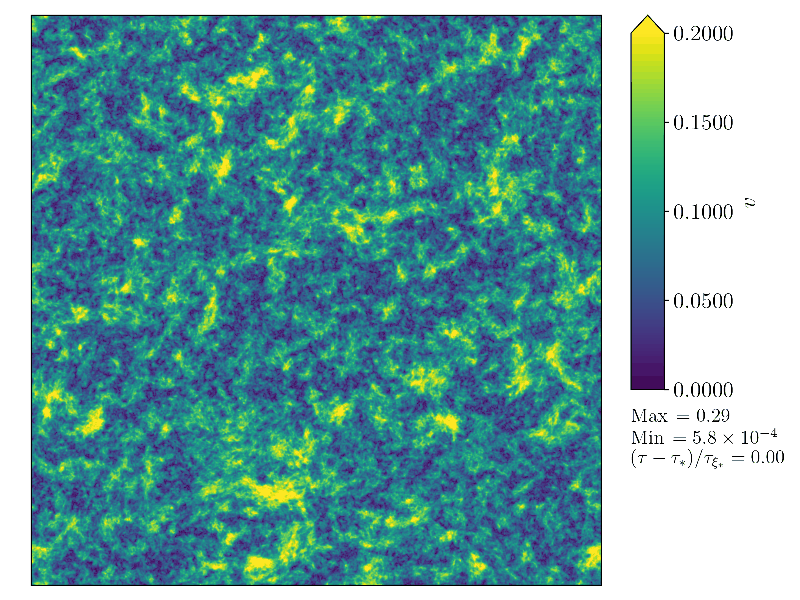As our Universe has expanded and cooled, it is suspected that it has undergone different phase transitions. In particular, first order cosmological phase transitions provide a compelling source of Gravitational Waves (GWs) and this is particularly interesting in the context of the Laser Interferometer Space Antenna LISA. In a recent publication, Pierre and his collaborators proposed a new accurate semi-analytical model for predicting the GW signal generated by a turbulent phase in the aftermath of a first order phase transition.
LISA can potentially detect GW signals from first order phase transitions occurring in the energy range \(100\,\mathrm{GeV}\) – \(1 \, \mathrm{TeV}\). There are several processes possibly leading to sizeable emission of GWs:
- Bubble percolation, with the consequent breaking of spherical symmetry, is the most direct one
- Bubble collision
- Sound waves produced in the fluid by expanding bubbles
- Decaying turbulence in the fluid
In Ref. [1], we propose a new model to the decay and decorrelation of a purely vortical velocity field and calculate the subsequent GW signal. To confirm the accuracy and relevance of the model, we have carried out a campaign of massively parallel direct numerical simulations of decaying turbulence. The figure below shows a slice across one of these simulations.
The following figure shows the initial conditions for the velocity
field in real space

After some evolution, the velocity field decays and small scale
structures develop. The next figure shows the velocity field
after \(20\)
eddy
turnover times

Based on this modelling, we provide an approximate analytical form for the GW signal which could be readily used within the LISA collaboration to search for it. In the figure below, coloured lines show the results of the simulations, the black line the semi-analytical model and the grey line the analytical form usable for LISA.

Other new findings are presented in Ref. [1]. For instance, including an initial growth phase for the turbulent flow is shown to heavily influences the spectral shape of the SGWB. This highlights the importance of a complete understanding of the turbulence generation mechanism.